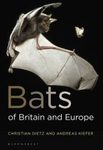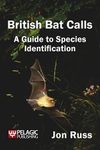Monograph Journal / Magazine
By: Paúl M Velazco(Author), Robert S Voss(Author), David William Fleck(Author), Nancy B Simmons(Author)
199 pages, 39 colour photos and b/w illustrations, 72 tables
![Mammalian Diversity and Matses Ethnomammalogy in Amazonian Peru, Part 4: Bats Mammalian Diversity and Matses Ethnomammalogy in Amazonian Peru, Part 4: Bats]()
Click to have a closer look
About this book
Customer reviews
Related titles
About this book
In this report, the fourth of the monographic series on mammalian diversity and Matses ethnomammalogy in the Yavarí-Ucayali interfluvial region of northeastern Peru, the authors document the occurrence of 98 species of bats, including 11 emballonurids, 2 noctilionids, 66 phyllostomids, 1 furipterid, 4 thyropterids, 7 vespertilionids, and 7 molossids. New species based on specimens collected in this region (Peropteryx pallidoptera, Micronycteris matses, Hsunycteris dashe, Sturnira giannae, and Thyroptera wynneae) have already been described elsewhere, but noteworthy distributional and taxonomic results newly reported here include the first specimen of Diclidurus isabella from Peru and the diagnosis of Glossophaga bakeri as a species distinct from G. commissarisi. Lists of examined voucher specimens, identification criteria, essential taxonomic references, and summaries of natural history observations are provided for all species. Original natural history information reported herein includes numerous observations of roosting behaviour obtained by indigenous Matses collaborators. The authors assess the Yavarí-Ucayali bat inventory for completeness and conclude that more species remain to be discovered in the region, whereas many as 116 species might be expected. Most of the “missing” species (those expected based on geographic criteria but not actually observed) are aerial insectivores, a guild that is notoriously difficult to sample by mist-netting. Of the 98 species in the observed regional fauna, only 71 are known to occur sympatrically at Jenaro Herrera, by far the best-sampled locality between the Yavarí and Ucayali rivers. Faunal comparisons with extralimital inventories (e.g., from Brazil, Ecuador, and French Guiana) suggest that frugivorous bats are substantially more speciose in western Amazonia than in eastern Amazonia, a result that is consistent with previous suggestions of an east-to-west gradient in the trophic structure of Amazonian mammal faunas.
As previously reported, the Matses have only a single name for “bat”, but they recognize the existence of many unnamed local species, which they distinguish on the basis of morphology and behaviour. However, by contrast with the well-documented accuracy of Matses observations about primates and other game species, recorded Matses monologues about bat natural history contain numerous factual errors and ambiguities. Linguistic underdifferentiation of bat diversity and inaccurate natural history knowledge are both explained by cultural inattention to small, inedible, and inoffensive nocturnal fauna.
Customer Reviews
Monograph Journal / Magazine
By: Paúl M Velazco(Author), Robert S Voss(Author), David William Fleck(Author), Nancy B Simmons(Author)
199 pages, 39 colour photos and b/w illustrations, 72 tables











































